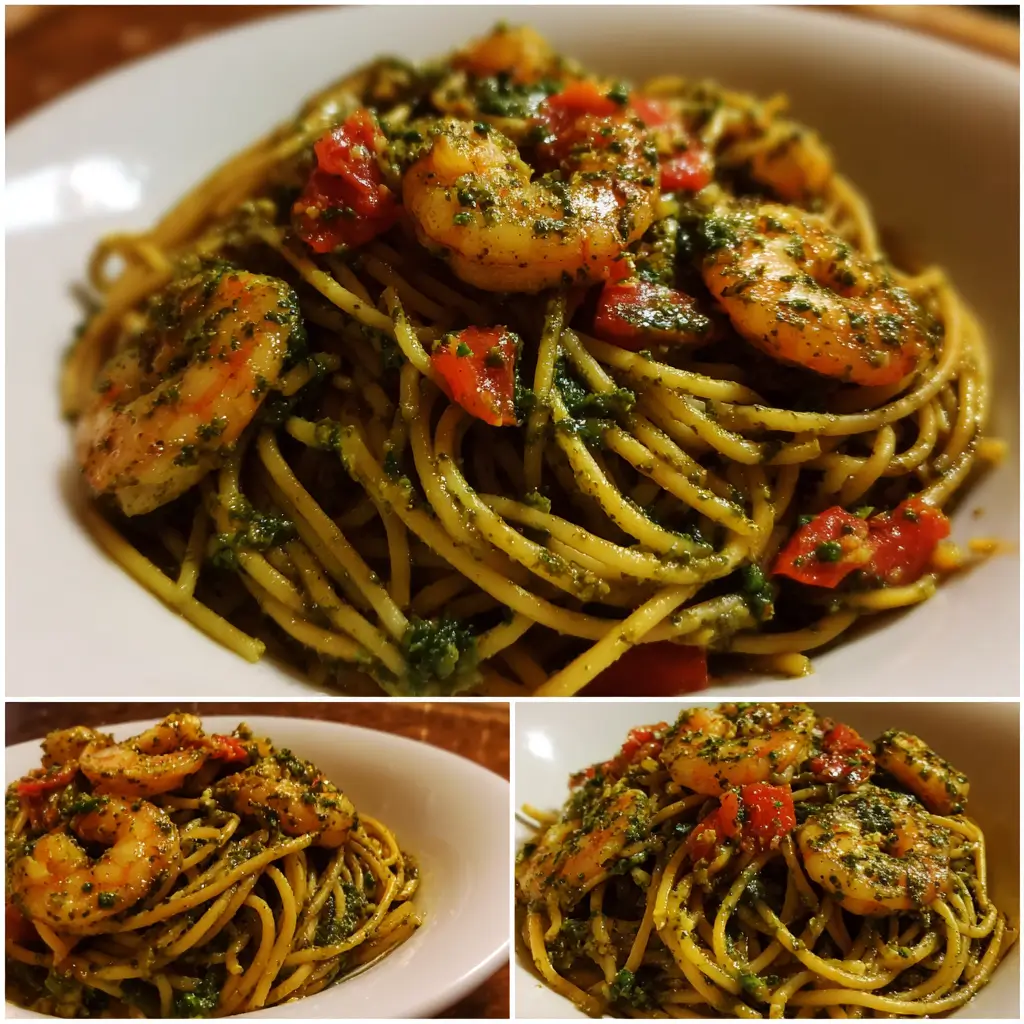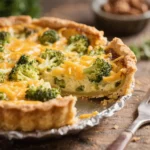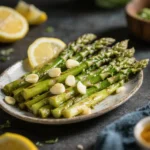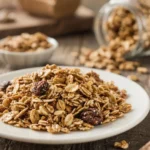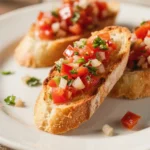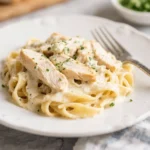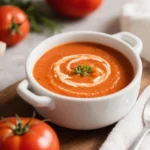Pesto Shrimp Spaghetti: A Flavorful Fusion of Italian and Seafood Delights
There’s something undeniably magical about the way fresh seafood dances with bold Italian flavors. Pesto Shrimp Spaghetti is a modern culinary masterpiece that brings together the creamy, herbaceous richness of basil pesto with the delicate sweetness of succulent shrimp, all twirled into a bed of perfectly al dente spaghetti. This dish has gained immense popularity across home kitchens and gourmet restaurants alike, thanks to its vibrant color, aromatic profile, and restaurant-quality taste that can be recreated in under 30 minutes. Whether you’re preparing a romantic dinner for two or a casual weeknight meal, this recipe promises elegance without excess effort.
The History Behind the Dish
While spaghetti and shrimp have long been staples in Mediterranean and Southern European cuisines, their union with pesto is a relatively recent innovation born from the fusion of traditional Italian cooking and global flavor experimentation. Pesto itself originates from Genoa, Italy, where it was originally known as “pesto alla genovese.” Made from fresh basil, pine nuts, garlic, Parmesan cheese, and olive oil, this green sauce was traditionally served with trofie or trenette pasta. The addition of seafood—particularly shrimp—into pesto-based dishes began gaining traction in coastal regions of Italy and later flourished in American-Italian cuisine during the late 20th century. As chefs sought ways to elevate simple pasta dishes with protein-rich ingredients, shrimp became a natural complement due to its mild flavor and quick-cooking nature. Today, Pesto Shrimp Spaghetti stands as a symbol of culinary evolution—a harmonious blend of tradition and innovation on a single plate.
Ingredients Breakdown: What Makes This Dish Shine
The brilliance of Pesto Shrimp Spaghetti lies not just in its taste but in the quality and synergy of its components. Let’s take a deep dive into each ingredient and understand why they are essential:
- Fresh Shrimp: Opt for large or jumbo shrimp (16–20 count per pound), peeled and deveined. Freshness is key; look for firm, translucent flesh with a mild ocean scent. Shrimp cook quickly and absorb surrounding flavors beautifully, making them ideal for pairing with bold sauces like pesto.
- Spaghetti: Classic dried or fresh spaghetti works well here. Its long, thin shape holds onto the thick, oily pesto sauce, ensuring every bite delivers maximum flavor. Whole wheat or gluten-free alternatives can be used depending on dietary needs.
- Basil Pesto: You can use homemade or high-quality store-bought pesto. Traditional pesto includes fresh Genovese basil, extra virgin olive oil, toasted pine nuts, garlic, Parmigiano-Reggiano, and a touch of Pecorino Romano. The herbal freshness cuts through the richness of the dish.
- Garlic: Adds depth and aromatic warmth when sautéed with the shrimp. Freshly minced garlic ensures a bright, pungent note that elevates the entire dish.
- Olive Oil: Use a good quality extra-virgin olive oil for both sautéing and enriching the sauce. It contributes fruitiness and helps emulsify the pesto with the starchy pasta water.
- Lemon: A squeeze of fresh lemon juice at the end brightens the dish, balancing the fat content and enhancing the shrimp’s natural sweetness.
- Salt & Black Pepper: Essential seasonings that bring out the individual flavors of each component.
- Red Pepper Flakes (optional): For those who enjoy a bit of heat, crushed red pepper adds a subtle kick that contrasts nicely with the creamy pesto.
- Parmesan Cheese: Grated Parmesan is often stirred in or sprinkled on top for added umami and salty complexity.
- Pasta Water: Often overlooked, starchy pasta water is crucial for helping the pesto cling to the noodles and creating a silky, cohesive sauce.
Step-by-Step Recipe: How to Make Perfect Pesto Shrimp Spaghetti
Follow these detailed steps to create a restaurant-worthy Pesto Shrimp Spaghetti that will impress even the most discerning palates:
- Prepare Ingredients: Start by gathering and prepping everything. Peel and devein the shrimp, pat them dry with paper towels, and season lightly with salt and pepper. Mince the garlic. Measure out your pesto, grate the Parmesan, and juice half a lemon. Having everything ready before cooking ensures smooth execution.
- Cook the Spaghetti: Bring a large pot of salted water to a rolling boil (use about 1 tablespoon of salt per quart of water). Add the spaghetti and cook according to package instructions until al dente—usually 8–10 minutes. Reserve ¾ cup of pasta water before draining. Do not rinse the pasta; the starch is vital for sauce adhesion.
- Sauté the Garlic: While the pasta cooks, heat 2 tablespoons of olive oil in a large skillet or sauté pan over medium heat. Add the minced garlic and cook gently for about 30 seconds to 1 minute, just until fragrant but not browned. Burnt garlic turns bitter, so keep the heat moderate.
- Cook the Shrimp: Increase the heat to medium-high. Add the seasoned shrimp in a single layer. Cook for 1–2 minutes per side, turning once, until they turn pink and opaque. Avoid overcrowding the pan; cook in batches if necessary. Overcooking leads to rubbery shrimp, so remove them from the pan as soon as they’re done. Set aside.
- Combine Pasta and Pesto: Drain the cooked spaghetti and immediately return it to the pot or transfer it back to the skillet (remove garlic if desired). Add ½ to ¾ cup of prepared basil pesto, depending on how saucy you want the dish. Toss vigorously to coat the strands evenly.
- Incorporate Pasta Water: Begin adding reserved pasta water, one tablespoon at a time, while tossing continuously. The starch in the water helps loosen the pesto into a creamy emulsion that clings to the pasta. Continue until the sauce reaches a smooth, glossy consistency.
- Add Shrimp Back In: Return the cooked shrimp to the skillet with the pesto-coated pasta. Gently toss to reheat the shrimp and allow flavors to meld, about 1–2 minutes.
- Finish with Freshness: Remove from heat. Stir in a squeeze of fresh lemon juice, an extra drizzle of olive oil, and optional red pepper flakes. Taste and adjust seasoning with more salt, pepper, or lemon as needed.
- Serve Immediately: Divide among warm plates. Garnish generously with freshly grated Parmesan cheese, a few whole basil leaves, and a twist of black pepper. Serve hot with crusty bread and a crisp white wine such as Pinot Grigio or Sauvignon Blanc.
Pro Tips for Success
- Don’t Overcook the Shrimp: Shrimp cook very fast. They should curl into a loose “C” shape when done. If they form a tight “O,” they’re overcooked.
- Use High-Quality Pesto: If using store-bought, read labels carefully. The best versions contain only olive oil, basil, pine nuts, garlic, cheese, and salt—no preservatives or artificial colors.
- Reserve Pasta Water: Never skip this step! Starchy pasta water is the secret weapon behind creamy, restaurant-style sauces.
- Taste as You Go: Adjust pesto quantity based on personal preference. Some love bold pesto flavor; others prefer a lighter touch.
- Warm Your Plates: Serving pasta on cold plates causes it to cool too quickly. Warm plates help maintain temperature and enhance the dining experience.
- Make It Ahead? Not Really: This dish is best enjoyed fresh. However, you can prep ingredients ahead—peel shrimp, make pesto, measure spices—for faster assembly later.
Variations and Customizations
One of the greatest strengths of Pesto Shrimp Spaghetti is its adaptability. Here are some creative twists to suit different tastes and dietary preferences:
- Vegetarian Version: Skip the shrimp and add roasted vegetables like zucchini, cherry tomatoes, bell peppers, and asparagus. You could also include artichoke hearts or sun-dried tomatoes for extra depth.
- Vegan Option: Use vegan pesto (made without cheese or dairy) and substitute shrimp with marinated tofu, tempeh, or king oyster mushrooms sliced to mimic scallops.
- Nut-Free Pesto: Replace pine nuts with sunflower seeds or omit nuts altogether. Hemp seeds or pumpkin seeds also work well and add nutrition.
- Different Proteins: Try grilled chicken, scallops, or flaked salmon instead of shrimp for a new flavor profile.
- Pasta Alternatives: Swap spaghetti for linguine, fettuccine, penne, or even spiralized zucchini noodles (zoodles) for a low-carb option.
- Herb Variations: Experiment with different pestos—try arugula pesto for peppery notes, cilantro-lime pesto for a Mexican twist, or kale-walnut pesto for earthiness.
- Creamy Upgrade: For a richer texture, stir in a splash of heavy cream, mascarpone, or Greek yogurt along with the pesto.
- Seafood Medley: Combine shrimp with mussels, clams, or squid rings for a luxurious surf-and-turf-style pasta.
Health Considerations and Nutritional Value
Pesto Shrimp Spaghetti can be part of a balanced diet when prepared thoughtfully. Here’s a breakdown of its nutritional aspects:
- Shrimp: Low in calories and high in protein, shrimp provide essential nutrients like selenium, vitamin B12, iodine, and omega-3 fatty acids, which support brain and heart health. However, they do contain cholesterol, though recent research suggests dietary cholesterol has less impact on blood cholesterol than once believed.
- Pesto: While rich in healthy monounsaturated fats from olive oil and nuts, traditional pesto is calorie-dense. To lighten it up, reduce the oil slightly or use walnuts instead of pine nuts, which offer more omega-3s.
- Pasta: Refined white pasta has a higher glycemic index, meaning it can spike blood sugar. Opt for whole grain, legume-based (like chickpea or lentil), or ancient grain pastas (such as farro or spelt) for increased fiber and sustained energy.
- Sodium Content: Store-bought pesto and Parmesan cheese can be high in sodium. Choose low-sodium options or make your own pesto to control salt levels.
- Portion Control: This dish is satisfying, so moderate portions go a long way. Aim for 3–4 oz of shrimp and 2 oz (dry weight) of pasta per serving, loaded with veggies for volume and nutrients.
- Allergen Notes: Contains shellfish, tree nuts (pine nuts), dairy, and wheat/gluten. Be mindful when serving guests with allergies. Substitutions are available for most allergens, as noted above.
Full Ingredient List
- 12 oz (340g) dried spaghetti (or preferred pasta)
- 1 lb (450g) large shrimp, peeled and deveined
- ¾ cup (180g) basil pesto (homemade or premium store-bought)
- 3 tbsp extra virgin olive oil (divided)
- 4 cloves garlic, minced
- ½ lemon, juiced
- ½ cup freshly grated Parmesan cheese (plus extra for garnish)
- ½ tsp salt (or to taste)
- ¼ tsp black pepper
- ¼ tsp red pepper flakes (optional)
- ¾ cup reserved pasta cooking water
- Fresh basil leaves, for garnish
Detailed Directions
- Fill a large pot with water, add 1 tablespoon of salt, and bring to a boil. Add spaghetti and cook until al dente. Before draining, reserve ¾ cup of starchy pasta water. Drain and set aside.
- In a large skillet, heat 2 tablespoons of olive oil over medium heat. Add minced garlic and sauté for 30–60 seconds until aromatic but not browned.
- Increase heat to medium-high. Add shrimp in a single layer, season with salt and pepper, and cook 1–2 minutes per side until pink and opaque. Remove shrimp and set aside.
- In the same skillet, add drained spaghetti and pesto. Toss to combine.
- Gradually add reserved pasta water, starting with ¼ cup and adding more as needed, until the sauce becomes creamy and coats the pasta evenly.
- Return cooked shrimp to the skillet. Add lemon juice, red pepper flakes (if using), and half the Parmesan. Gently toss to combine and heat through for 1–2 minutes.
- Remove from heat. Drizzle with remaining 1 tablespoon olive oil and stir in additional Parmesan if desired.
- Taste and adjust seasoning. Serve immediately, garnished with extra Parmesan, fresh basil, and a crack of black pepper.
Frequently Asked Questions (FAQ)
Can I use frozen shrimp?
Yes, absolutely. Just thaw them properly in the refrigerator overnight or under cold running water. Pat dry thoroughly before cooking to prevent steaming instead of searing.
How do I prevent my pesto from turning brown?
Exposure to air causes oxidation. To preserve its vibrant green color, press plastic wrap directly onto the surface of leftover pesto or add a thin layer of olive oil on top. When making homemade pesto, blanching basil briefly can also help retain color.
Can I make this ahead of time?
Best served fresh. However, you can precook components separately: cook pasta (rinse with oil to prevent sticking), prepare pesto, and cook shrimp. Reheat and combine just before serving.
Is pesto healthy?
Traditional pesto contains healthy fats from olive oil and nuts, along with antioxidants from basil. But it’s calorie-dense, so portion control is advised. Homemade allows you to reduce oil or salt as needed.
What wine pairs well with Pesto Shrimp Spaghetti?
A crisp, acidic white wine like Pinot Grigio, Vermentino, or Sauvignon Blanc complements the herbal notes and balances the richness. For a bolder choice, try a light-bodied rosé.
Can I freeze this dish?
Not recommended. Freezing affects the texture of both shrimp (becomes mushy) and pasta (turns soft). Pesto alone freezes well, though—portion it into ice cube trays for future use.
Why is my sauce too thick or too thin?
Too thick? Add more pasta water, 1 tablespoon at a time. Too thin? Continue tossing over low heat to evaporate excess moisture, or add more pesto or grated cheese to thicken.
Can I use bottled lemon juice?
Freshly squeezed lemon juice offers superior flavor and brightness. Bottled juice can taste flat or metallic due to preservatives. Always opt for fresh when possible.
Summary
Pesto Shrimp Spaghetti is a vibrant, flavorful dish that combines tender shrimp, aromatic basil pesto, and perfectly cooked pasta into a quick yet elegant meal. With endless customization options and a balance of protein, healthy fats, and carbohydrates, it’s a versatile favorite for any occasion.
